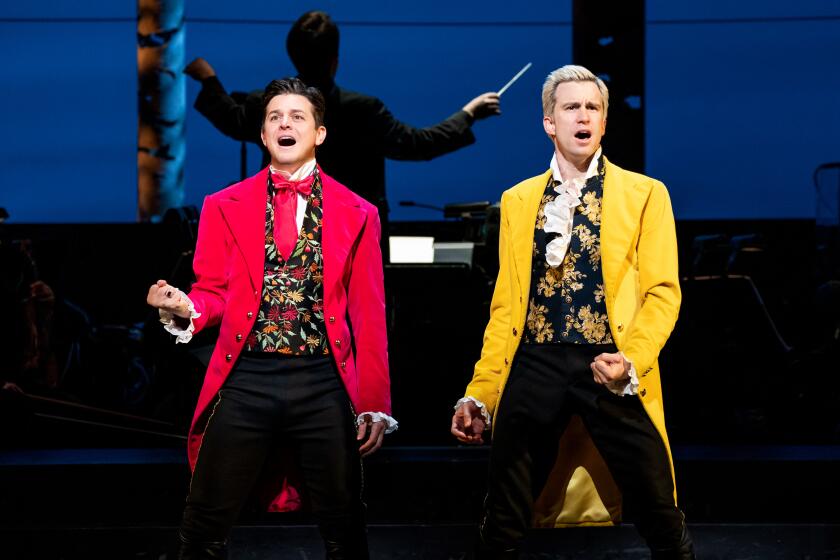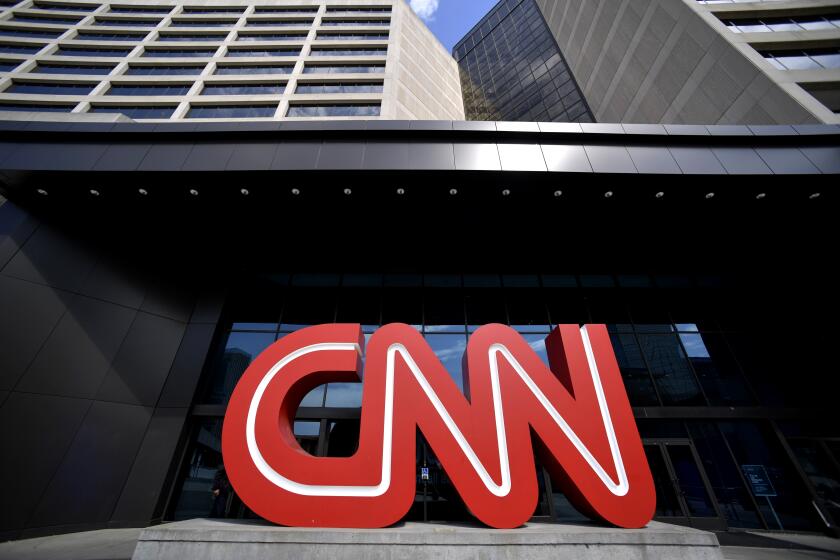Ardor for Arbor With Shady Past
A long-gone part of Ojai’s past is set to become an essential element of its present.
A campaign to restore the 145-foot-long arched pergola--or covered walkway--that fronted Libbey Park from 1917 until it was torn down in 1971 has gained ground with a variety of local panels, including the City Council.
Just why the Mission revival-style pergola, a key ingredient of benefactor Edward Libbey’s grand vision for Ojai, was torn down is subject to debate. But the prevailing theory is that it was razed after local conservatives bombed it, seeking to scare off the era’s Vietnam War protesters who gathered there, and the city decided not to rebuild a structure that was seen as outdated.
But by the fall of 1998, if backers have their way, Ojai will be made whole again with a structure that has new relevance in the 1990s.
“This pergola will provide shade on the sidewalk, it will encourage pedestrian access and calm traffic,” said David Bury, an architect and chairman of the city’s Planning Commission. “If it was here today, with our current community perspective, no one would ever dream of tearing it down.”
The dream of seeing the pergola rise again began to take shape in earnest in September when unofficial municipal historian Dave Mason, late activist Carla Bard and other community members formed what was called the Ojai Reconstruction Committee.
The intent was to rebuild the only missing part of the legacy left by Libbey’s transformation of dusty little Nordhoff into elegant Ojai in 1916 and 1917. Although buildings ranging from Ojai’s famous arcade to the millionaire’s stable remain, the pergola does not.
“The very cornerstone of his downtown plan is missing,” Bury said. “It was designed as a gateway to Libbey Park, but it was also designed as a matching piece to the downtown.”
*
The 9-foot-high pergola stretched from the historic Post Office at the corner of Signal Street and Ojai Avenue to just south of the city-owned park, and featured a plant-covered trellis protecting pedestrians from the elements and a pair of 21-foot-high arches.
The committee has spent two months garnering widespread support for a drive to raise the $150,000 it is estimated that the reconstruction will cost. A litany of city-sponsored and private nonprofit groups have signed on to the concept, ranging from the Ojai Historic Preservation Commission to the Chamber of Commerce. And last week, the council voted to endorse the pergola.
At the council’s request, the Ojai Arts Commission will become the latest group to receive a presentation on the subject when it meets at 6:30 tonight at City Hall.
“Growing up in Ojai, I have fond memories of walking through the pergola when I was a small child,” said Mayor Steve Olson, 48. “I have not talked to one person in opposition to rebuilding the pergola. . . . Maybe now it’s time to rebuild a piece of our history.”
The pergola’s downfall came after it was made structurally unsafe by two bombings, which were generally interpreted to be a blunt message to move along and directed at the hippies and war protesters who gathered at the park and along a 3 1/2-foot-high wall that stretched the pergola’s length.
Although a fund-raising drive was launched to repair the damage, the city tore down the pergola and the wall.
*
These days, the pergola is widely seen as being a victim of the times, especially since those perceived as radicals then are now firmly ensconced as part of Ojai’s establishment, Olson said.
Moreover, the pergola’s past popularity as a meeting place is testimony to its effectiveness as a civic structure, Bury said.
Still, not everyone would welcome the pergola’s return.
The seven-member governing panel of the Ojai Civic Assn., a group Libbey founded to maintain the park, has unanimously opposed the pergola’s reconstruction.
The group reached its decision even though the original wall between the sidewalk and park has been eliminated from the updated design and many of the oak trees that hid what some perceived as less than savory goings-on have since been chopped down.
“Before, people were afraid to walk in the park,” said Ray Huckins, a panel member and mayor of Ojai in the late 1960s. “It’s so much nicer without the pergola and that wall there that to put it back just because it used to be there seems ridiculous. . . . I don’t know offhand of anybody that does want it up.”
Still, proponents say they collected hundreds of signatures from people convinced that the pergola should rise again by Ojai Day next fall.
Moreover, the pergola would help slow traffic on Ojai’s main street by reducing a feeling of openness that encourages speeding and would help retain the vibrant pedestrian-oriented retail core, backers said.
More to Read
The biggest entertainment stories
Get our big stories about Hollywood, film, television, music, arts, culture and more right in your inbox as soon as they publish.
You may occasionally receive promotional content from the Los Angeles Times.










